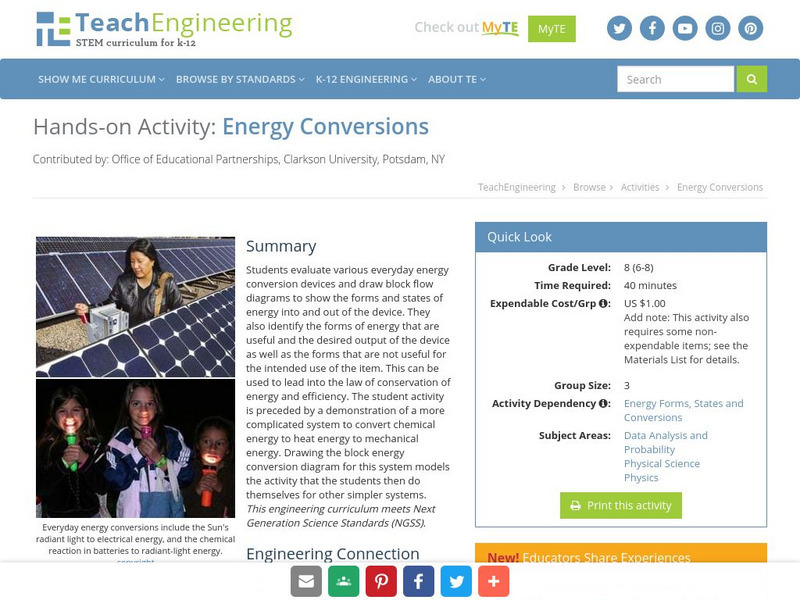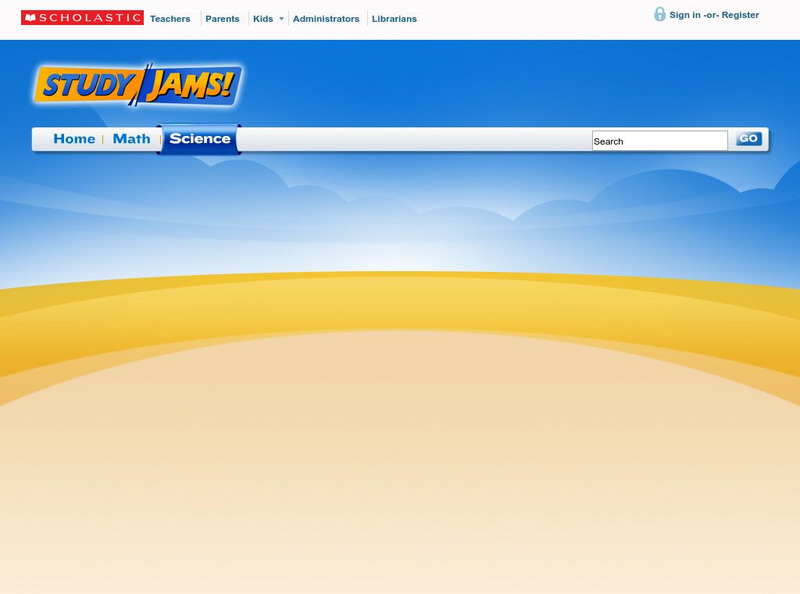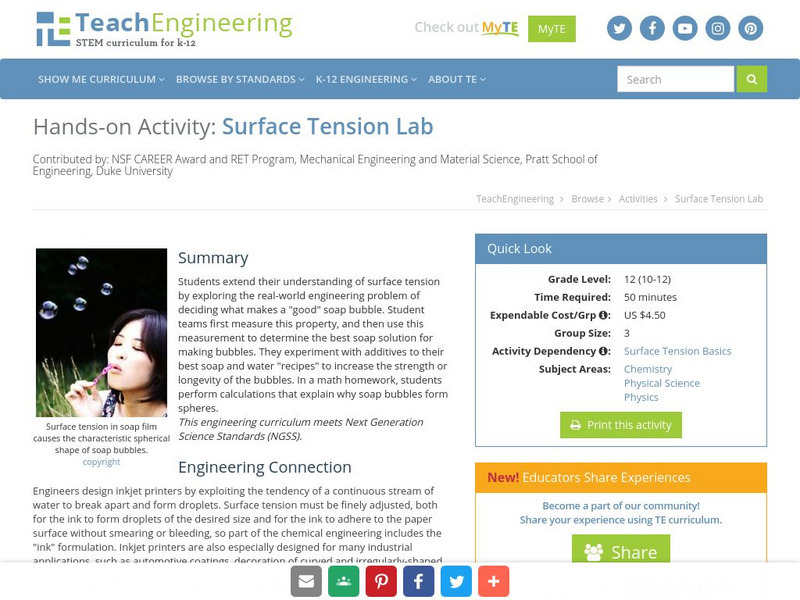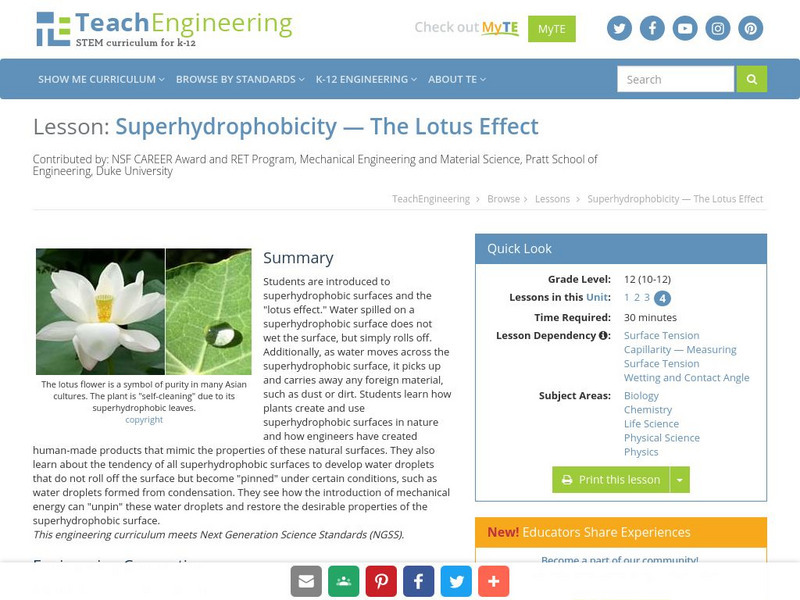Texas Education Agency
Texas Gateway: Forms of Energy
Given diagrams, illustrations, or descriptions, students will identify the types of energy.
TeachEngineering
Teach Engineering: Energy Forms and States Demonstrations
Demonstrations explain the concepts of energy forms (sound, chemical, radiant [light], electrical, atomic [nuclear], mechanical, thermal [heat]) and states (potential, kinetic).
CK-12 Foundation
Ck 12: Forms of Energy
[Free Registration/Login may be required to access all resource tools.] In this online lesson students will investigate examples of kinetic and potential energy and their transformations.
TeachEngineering
Teach Engineering: Energy Conversions
Students evaluate various everyday energy conversion devices and draw block flow diagrams to show the forms and states of energy into and out of the device. They also identify the forms of energy that are useful and the desired output of...
Scholastic
Scholastic: Study Jams! Science: Matter: Energy & Matter
A video and a short quiz on the different forms of energy, and how energy moves or changes matter.
CK-12 Foundation
Ck 12: Physical Science: Forms of Energy
[Free Registration/Login may be required to access all resource tools.] Introduction to forms of energy including the seven different forms.
CK-12 Foundation
Ck 12: Physical Science: Forms of Energy
[Free Registration/Login may be required to access all resource tools.] Introduction to the seven different forms of energy.
Concord Consortium
Concord Consortium: Energy of Bond Formation
Explore distance and energy of bond formation.
Ducksters
Ducksters: Physics for Kids: Energy
Kids learn about the science behind Energy including its different forms such as chemical, electrical, heat, and gravitational. When is energy considered renewable or nonrenewable?
TeachEngineering
Teach Engineering: Surface Tension Lab
Students extend their understanding of surface tension by exploring the real-world engineering problem of deciding what makes a "good" soap bubble. Student teams first measure this property, and then use this measurement to determine the...
TeachEngineering
Teach Engineering: Superhydrophobicity: The Lotus Effect
Students are introduced to superhydrophobic surfaces and the "lotus effect." Water spilled on a superhydrophobic surface does not wet the surface, but simply rolls off. Additionally, as water moves across the superhydrophobic surface, it...
Chemicool
Chemicool: Manganese
Chemicool.com offers a very well organized set of data tables describing the chemical and physical properties of manganese. Very helpful.
Khan Academy
Khan Academy: Thermodynamics Article
Thermodynamics is a very important branch of both physics and chemistry. It deals with the study of energy, the conversion of energy between different forms and the ability of energy to do work. Through this article, you will begin to...
Concord Consortium
Concord Consortium: Stem Resources: Making and Breaking Bonds
A look at the processes of association and dissociation in chemical bonding. Observe simulations that show the influence of temperature on making and breaking of bonds, how diatomic molecules form, and what determines the speed of...
Chemicool
Chemicool: Cesium
Chemicool.com offers a very good summary of the key physical and chemical properties of cesium. Well organized.
University of Arizona
University of Arizona: Problemas De La Fotosintesis. Bloque 1
In this module you will be able to test your understanding of how light energy is converted into different forms of chemical energy during photosynthesis, to review the equations for the light reactions of photosynthesis, and to explore...













